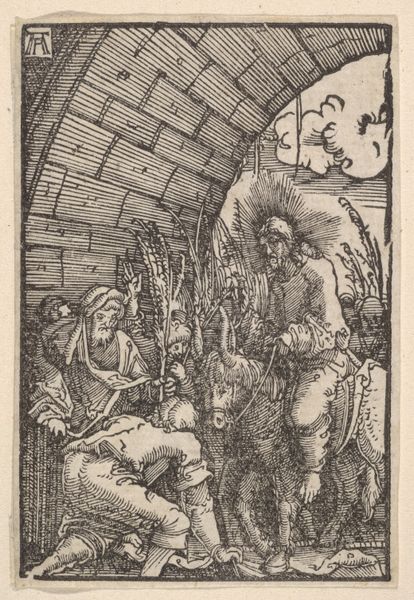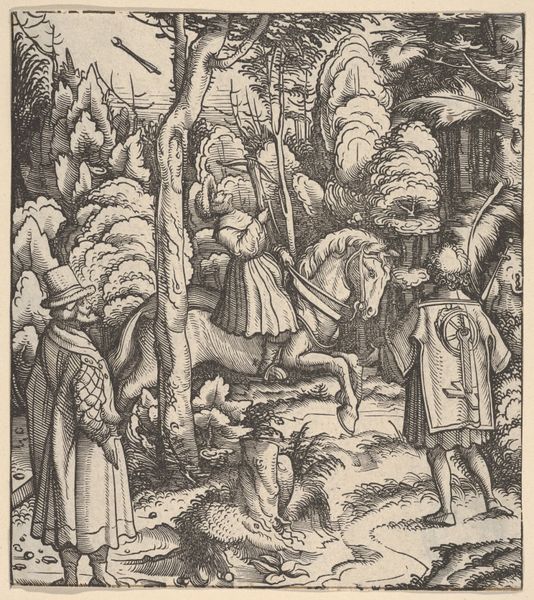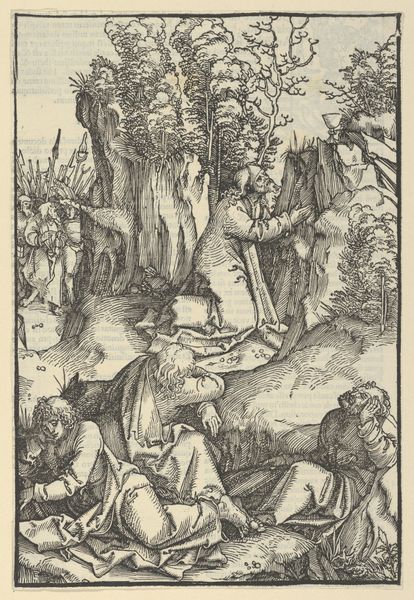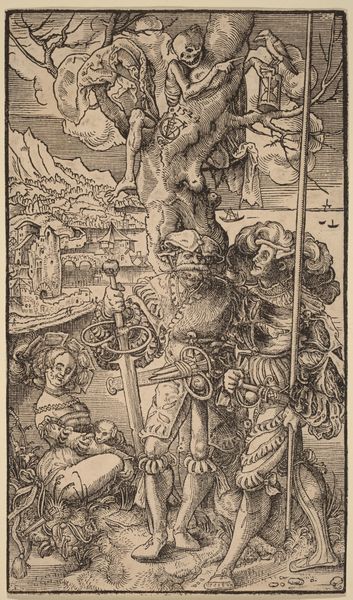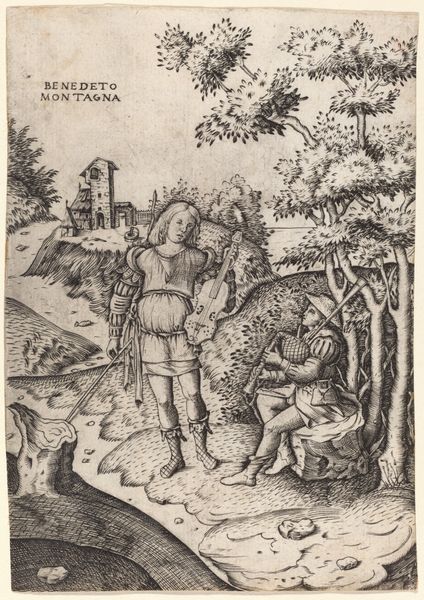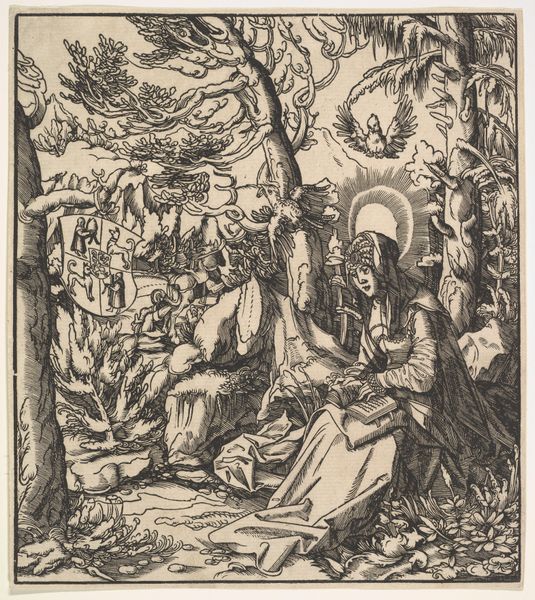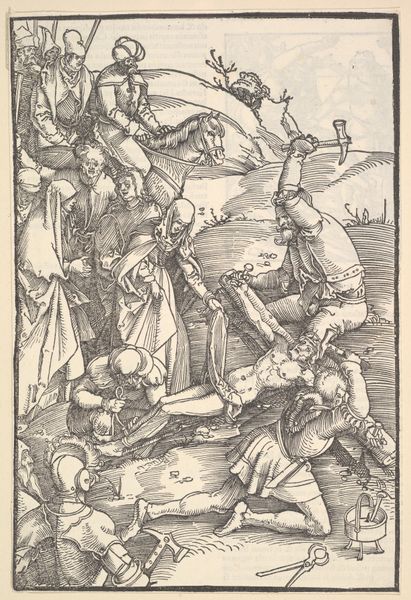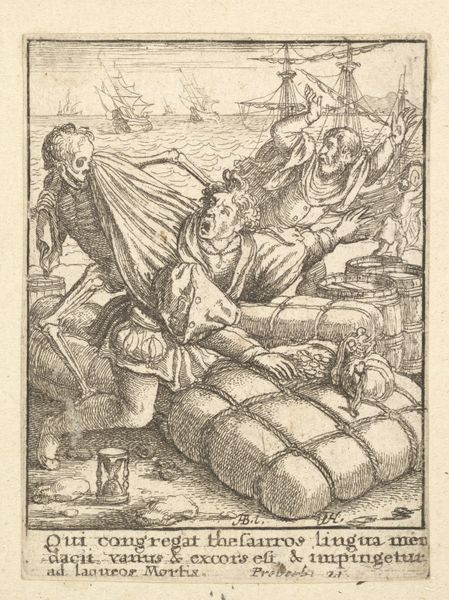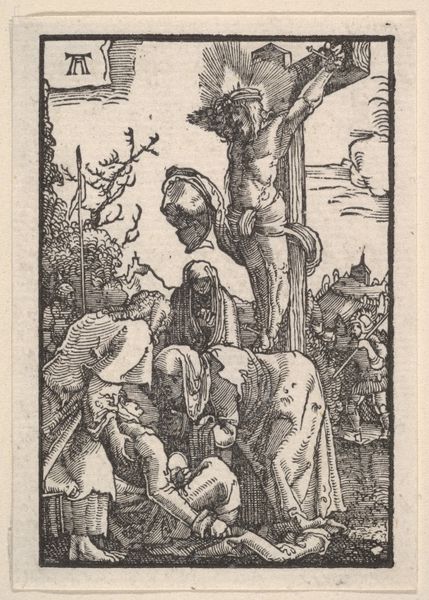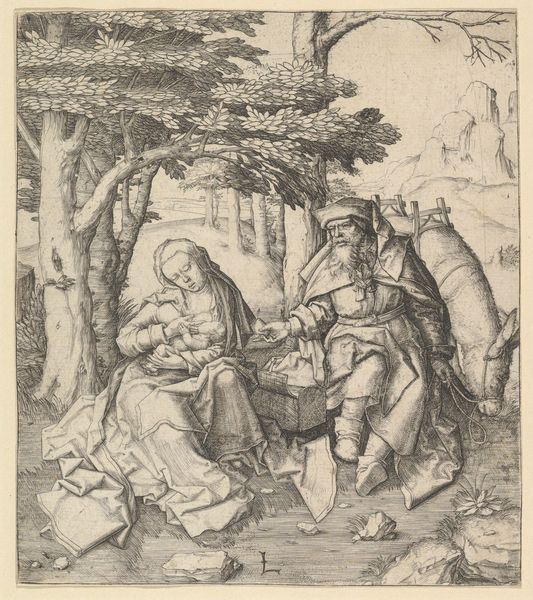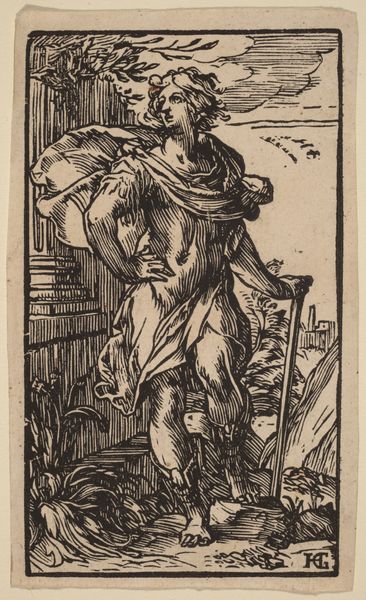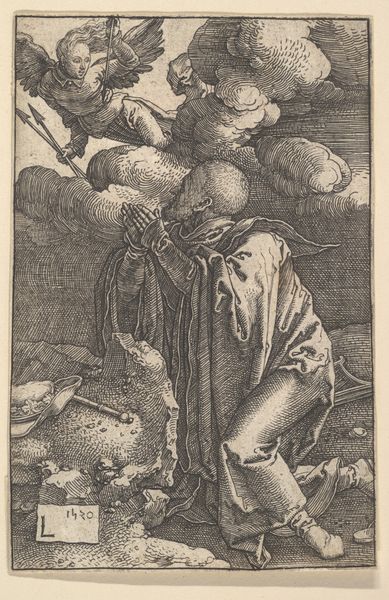
drawing, print, woodcut, engraving
#
drawing
#
narrative-art
#
pen drawing
# print
#
figuration
#
woodcut
#
line
#
genre-painting
#
northern-renaissance
#
engraving
Dimensions: Sheet: 4 7/8 × 3 15/16 in. (12.4 × 10 cm)
Copyright: Public Domain
Curator: This is "Aristotle and Phyllis," a woodcut by Hans Burgkmair, created sometime between 1498 and 1531. It presents a scene rife with social commentary. Editor: My first impression is how intensely graphic it is. The dense crosshatching creates strong tonal contrasts. It’s almost aggressively linear. Curator: Absolutely. And those lines convey so much. Burgkmair engages with the trope of powerful men undone by the wiles of women. Aristotle, the great philosopher, is depicted here on his hands and knees, being ridden like a horse by Phyllis. Editor: The composition definitely amplifies that. Phyllis, perched atop Aristotle, controls him with a rein. The angle makes him seem smaller, diminished, doesn’t it? Her higher position suggests dominance. Curator: Precisely. And considering this work originates from the Northern Renaissance, its critique is aimed at established power structures and societal expectations. Phyllis embodies female agency, disrupting the patriarchal order. Editor: The artist really commits to the rendering of textures. You can almost feel the roughness of the bark, the folds of Phyllis’s garments... I'm struck by the stark contrast between the smoothness of her skin and the rough texture of Aristotle's clothing. Is there some intention behind it? Curator: Certainly. It's all interconnected to challenge the perceived notions of beauty, power, and wisdom, disrupting the status quo. The image isn’t merely a lighthearted jest but also functions as a reminder that intellect isn't a safeguard against the "irrational" sway of passion or seduction, and I think we need to reflect about these stereotypes nowadays, from a female empowerment point of view. Editor: From a purely aesthetic viewpoint, the lines direct my eyes across the figures and background to a distant horizon that grants depth despite the flatness inherent to a woodcut. Curator: Yes, the strategic employment of detail enriches both the narrative and the artistic design itself. I would suggest everyone to explore and look beyond a mere comedic situation between a female figure and the popular and acclaimed philosopher and start advocating for a shift of social perspective about the historical context. Editor: Well, I’ve certainly appreciated discovering how Burgkmair uses light and line in such an evocative and complex manner, regardless of historical commentary.
Comments
No comments
Be the first to comment and join the conversation on the ultimate creative platform.
